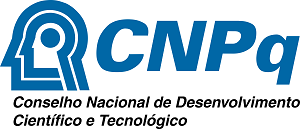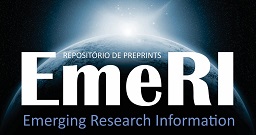Desenvolvimento do ensino superior nas regiões da Rússia
o número de pessoal científico e pedagógico
DOI:
https://doi.org/10.25053/redufor.v7i1.6803Palavras-chave:
Ensino Superior, Número de Professores, Número de Alunos, Regiões da RússiaResumo
O estudo foi dedicado à avaliação de indicadores que caracterizam o número e a estrutura do pessoal científico e pedagógico de universidades e outras instituições de ensino superior nas regiões da Rússia. Esses indicadores foram o número de professores que trabalham em instituições de ensino superior por mil residentes e por cem estudantes, a proporção de professores e professores associados no número total de professores. O estudo utilizou informações estatísticas oficiais sobre 82 regiões da Rússia. Usamos funções de densidade de distribuição normal como modelos. O estudo constatou que, em média, por mil residentes, pouco mais de um membro do corpo docente trabalhava em organizações de ensino superior. Está provado que, em média, um em cada sete professores em todas as regiões ocupou o cargo de professor. Aproximadamente dois terços de todos os professores ocupavam cargos de professor assistente, com cem alunos representando cinco professores.
Downloads
Referências
ABEL, J. R.; DEITZ, R. Do colleges and universities increase their region’s human capital? Journal of Economic Geography, [S.l.], v. 12, n. 3, p. 667-691, 2011. DOI: https://doi.org/10.1093/jeg/lbr020.
ANISIMOVA, E. E.; BABICH, S. G. Study of the main trends in the field of higher education. Economics and Management in the XXI Century: Development Trends, [S.l.], v. 33-2, p. 154-158, 2016.
CERVANTES, M. Higher education institutions in the knowledge triangle. Foresight and STI Governance, [S.l.], v. 11, n. 2, p. 27-42, 2017. DOI: https://doi.org/10.17323/2500-2597.2017.2.27.42.
CIRIACI, D. Does university quality influence the interregional mobility of students and graduates? The case of Italy. Regional Studies, [S.l.], v. 48, n. 10, p. 1592-1608, 2014. DOI: https://doi.org/10.1080/00343404.2013.821569.
CRUZ NEYRA, L. L.; TOLEDO ESPINOZA, E. S.; MENDONZA RAMÍREZ, A. J. Quality of Educational Service at the Faculty of Social Sciences and Humanities of a Public University. Educação & Formação, Fortaleza, v. 6, n. 3, e5293, 2021. DOI: https://doi.org/10.25053/redufor.v6i2.5293
DOUGLAS, J. Higher education’s new global order: How and why governments are creating structured opportunity markets. Educational Studies Moscow, [S.l.], v. 1, p. 73-98, 2011. DOI: https://doi.org/10.17323/1814-9545-2011-1-73-98.
FEDERAL STATE STATISTICS SERVICE. 2021. Available at: https://rosstat.gov.ru/. Accessed on: July 20th, 2021.
GURI-ROSENBLIT, S.; SEBKOVA, H.; TEICHLER, U. Massification and diversity of higher education systems: interplay of complex dimensions. Higher Education Policy, [S.l.], v. 20, n. 4, p. 373-389, 2007. DOI: https://doi.org/10.1057/palgrave.hep.8300158.
HUAMAN CAMILLO, J. G.; IBARGUEN CUEVA, F. E.; MENACHO VARGAS, I. Trabajo cooperativo y aprendizaje significativo en Matemática en estudiantes universitarios de Lima. Educação & Formação, Fortaleza, v. 5, n. 3, e3079, p. 1-13, 2020. DOI: https://doi.org/10.25053/redufor.v5i15set/dez.3079.
JASPERS, K. The idea of the university. Boston: Beacon, 1960.
KIRILLINA, Y. V. Quality in higher education in quantitive indicators. Problems and Prospects of Education Development in Russia, [S.l.], v. 33, p. 132-136, 2015.
KURILOVA, O. O. Features of changes in the number and structure of university teachers. Regional Bulletin, [S.l.], v. 17, n. 56, p. 48-49, 2020.
LA MOBILITE INTERNATIONALE DES ETUDIANTS. S'organiser pour les défis à venir. Paris: La Documentation Française, 2019. Disponível em: https://www.vie-publique.fr/sites/default/files/rapport/pdf/194000726.pdf. Acesso em: 10 ago. 2021.
LOMONOSOV, A. V. Definition of students number standards for one staff position of the teaching staff. Creative Economy, [S.l.], v. 12, v. 84, p. 102-111, 2013.
MAKSIMOVA, I. V. Prospects for increasing the competitiveness of higher education in Russia. Scientific Bulletin of the Volgograd Branch of the Ranepa, [S.l.], v. 2, p. 81-93, 2019.
MELIKYAN, A. V. Statistical analysis of the dynamics of performance indicators of Russian universities. Questions of Statistics, [S.l.], v. 28, n. 1, p. 38-49, 2021. DOI: https://doi.org/10.34023/2313-6383-2021-28-1-38-49.
MIRANDA, P. R.; AZEVEDO, M. L. Fies and Prouni in the expansion of Brazilian higher education: policies to democratize access and/or to promote the private-mercantile sector?. Educação & Formação, Fortaleza, v. 5, n. 3, e1421, p. 1-19, 2020. DOI: https://doi.org/10.25053/redufor.v5i15set/dez.1421.
OECD/UIS/EUROSTAT. Education at a Glance Database, 2019. Disponível em: https://www.oecd-ilibrary.org/education/education-at-a-glance-2019_f8d7880d-en. Acesso em: 29 jul. 2021.
OFFICIAL statistical information on additional professional and higher education. Ministry of Science and Higher Education of the Russian Federation, 2021. Disponível em: https://minobrnauki.gov.ru/action/stat/highed/. Acesso em: 20 jul. 2021.
PINKOVETSKAIA, I. S. et al. Informal personal financing of entrepreneurs: gender characteristics. Universal Journal of Accounting and Finance, [S.l.], v. 9, n. 3, p. 442-449, 2021. DOI: https://doi.org/10.13189/ujaf.2021.090319.
PINKOVETSKAIA, I.; SLEPOVA, V. Estimation of fixed capital investment in SMEs: the existing differentiation in the Russian Federation. Business Systems Research, [S.l.], v. 9, n. 1, p. 65-78, 2018. DOI: https://doi.org/10.2478/bsrj-2018-0006.
POPOVA, S. S.; VDOVINA, E. L. Specificity of higher professional education in the Penza region. Bulletin of Penza State University, v. 4, n. 20, p. 8-11, 2017.
ROMANOV, E. V. Threats to the personnel potential of regional universities. Economy of the Region, [S.l.], v. 14, n. 1, p. 95-108, 2018. DOI: https://doi.org/10.17059/2018-1-8.
SCIENCE ELECTRONIC LIBRARY. Russian science citation index (RSCI), 2021. Disponível em: https://elibrary.ru/defaultx.asp. Acesso em: 10 ago. 2021.
SIANES-BAUTISTA, A. Desenvolvimento da Pedagogia como disciplina e seu impacto no ensino superior na Franca. Educação & Formação, Fortaleza, v. 6, n. 3, e5324, 2021. Disponível em: https://revistas.uece.br/index.php/redufor/article/view/5324. Acesso em: 23 ago. 2021.
STIGLITZ, J. E. Creating a learning society: a new approach to growth, development, and social progress. Columbia: Columbia University, 2014.
UNGER, M.; POLT, W. The knowledge triangle between research, education and innovation – A conceptual discussion. Foresight-Russia, v. 2, p. 10-26, 2017. DOI: https://doi.org/10.17323/2500-2597.2017.2.10.26.
VADIMOVA, I. V. Transition to new relations number of teachers and students. Counselor in the Field of Education, [S.l.], v. 6, p. 14-18, 2015.
VARDANYAN, G. V.; KESHISHYAN, G. A. Comparative statistical analysis of the dynamics number and structure of the professor-teaching staff of higher educational institutions of the RF and RA for the past decade. In the collection: Technologies in education - 2020. Collection of materials of the International Scientific and Methodological Conference. Novosibirsk, p. 384-393, 2020.
VLASOVA, O. V. The influence of transformation processes in the higher education system on the number of its staff. Baltic Humanitarian Journal, [S.l.], v. 10, n. 1, v. 34, p. 59-62, 2021. DOI: https://doi.org/10.26140/bgz3-2021-1001-0013.
Publicado
Como Citar
Edição
Seção
Licença
Copyright (c) 2022 Iuliia Pinkovetskaia

Este trabalho está licenciado sob uma licença Creative Commons Attribution 4.0 International License.
Os autores possuem direitos autorais dos seus textos:
A revista Educação & Formação permite ao autor os direitos de publicação, no entanto, recomenda um intervalo de dois anos para o caso de republicação.
Os nomes e endereços informados nesta revista serão usados exclusivamente para os serviços prestados por esta publicação, não sendo disponibilizados para outras finalidades ou a terceiros.



















